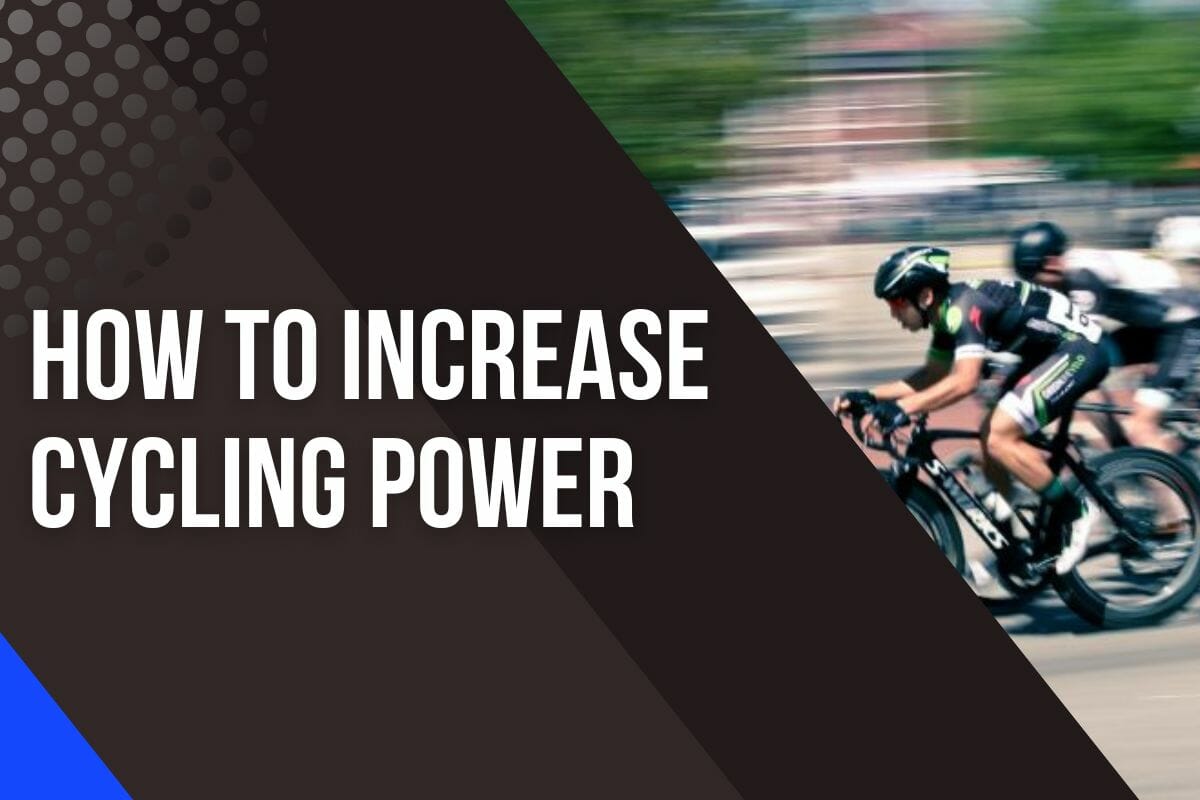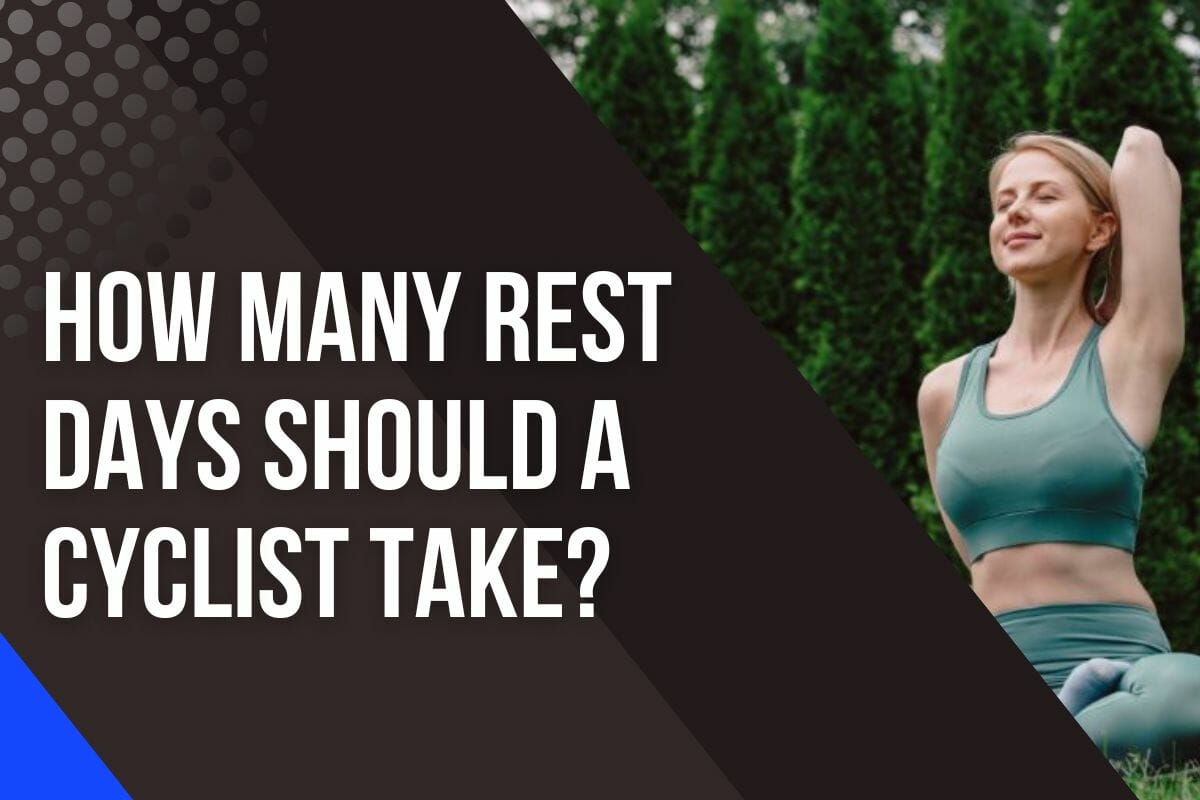What Is Sweet Spot Training In Cycling?

Cycling is a great way to get fit and enjoy the outdoors. But if you want to take your cycling performance to the next level, then sweet spot training might be just what you need.
It’s an effective method that has been gaining popularity among serious riders around the world.
So, what exactly is sweet spot training?
This article will explain what sweet spot training is, why it works so well for cyclists, and how you can make the most of its benefits.
Let’s dive into it and explore how this form of cycling can help you reach new heights on two wheels.
What Is Sweet Spot Training?
Sweet spot training is a popular cycling technique that focuses on riding at an intensity level between your aerobic and anaerobic threshold.
It is a series of intervals done near your Functional Threshold Power (FTP) with the goal of improving your ability to resist fatigue while putting out relatively high power over a long time. (1)
Functional Threshold Power (FTP) is a cycling metric that helps gauge the average power someone can sustain for an hour, measured in watts. (2, 3)
It’s an essential tool for assessing workouts and tracking progress over time. In a nutshell, FTP is a measure of the power you can generate for an hour.
Knowing your FTP and Training Stress Score (TSS) is key to setting training zones and improving your cycling performance.
Training at your “sweet spot” is a great way to boost your FTP and improve your endurance. (4)
It requires some balance between intensity and volume and is usually done at a rate between the higher end of zone three and the lower end of zone four. (5)
This kind of training is one of the most effective paths to better cycling performance and a positive impact on your body.
It’s a great way to get the most out of your workouts and to keep improving.
Sweet Spot Power Zone

As an avid cyclist, I was always looking for ways to improve my performance. That’s when I heard about sweet spot training.
Sweet Spot Power Zone (SSPZ) is a training zone located between 88-94% of your FTP that can be used to improve aerobic capacity and resistance to fatigue.
How Difficult Is Sweet Spot Training?
A common misconception is that it should feel easy to ride just below the threshold for a long time. But this isn’t the case because the target power is relatively high.
Sweet spot intervals consist of periods of high-intensity exercise followed by periods of active recovery, and over time you increase the length of your intervals until you can ride at SSPZ for up to an hour.
This type of training is challenging but doable, and by Rate of Perceived Exertion, Sweet Spot training will feel like a 7 on a scale of 1-10.
The intense effort required pushes you out of your comfort zone while the active rest periods allow you to focus on technique and really hone in on what you want to improve on next time around.
It’s important to remember that sweet spot training isn’t easy but with patience and dedication, you can see positive results in terms of improved endurance ride times and overall cycling performance.
Why Is Sweet Spot Effective?
I’ve been cycling for many years and have found that sweet spot training is one of the most effective ways to improve my aerobic capacity, muscular endurance, and overall cycling performance.
The sweet spot intensity range lies between threshold (the highest effort you can maintain without fatigue) and VO2 max (the highest aerobic capacity).
In this range, cyclists are able to maximize their efforts without reaching exhaustion or putting themselves at risk for injury or illness.

This level of intensity also allows riders to push longer than they would if they were working above their thresholds.
This type of training helps you build up the strength of your mitochondria which leads to higher aerobic performance, an increased number of capillaries delivering blood (oxygen & nutrients) to the muscles, a stronger heart, improved fat metabolism, and increased muscular endurance.
As a result, cyclists can experience improved performance both on and off the bike as well as increased endurance gains.
Should I Use Sweet Spot Training?
Sweet spot training is a great way for cyclists of all levels to reach their peak performance. Whether you’re a novice or an experienced cyclist, the SSPZ training zone can help you take your cycling game to the next level.
Advanced and professional cyclists may find that sweet spot training offers them the best results when they use it as a pre-racing preparation.
For those who can commit time daily to cycling, Sweet Spot training provides the best option for long-term progress.

There are two ways to complete Base Phase training with sweet spot workouts – one is zone 2 riding at low intensity and the other higher intensity sessions called Sweet Spot intervals.
The low-intensity mode requires 10-20 hours per week while the Sweet Spot mode takes around 5 hours per week.
Unless you can devote up to 20 hours per week just for training, I suggest going with the Sweet Spot training.
What Kind Of Riding Is Suitable For Sweet Spot?
Sweet spot training is a great way to get fitter and faster in all kinds of cycling disciplines.
Whether you’re into endurance riding for long-distance events, touring cycling for multi-day trips, mountain biking on rugged terrain, commuting cycling around the city, or track cycling at high speeds – sweet spot training has something to offer each rider.
The key benefits of sweet spot training are:
- Improved aerobic capacity
- Increased ability to ride harder and longer
- Greater efficiency in energy output over time
Many cycling events, such as a century or edition of the Gran Fondo require a long period at high power.
Utilizing this training program helps prepare your body so you can consistently put out the required power level, no matter how long it takes.

Additionally, Sweet Spot training strengthens your ability to handle shorter yet more intense rides such as criteriums or gravel rides in which you will be required to reach peak performance repeatedly and quickly.
It’s easy to see why sweet spot training is becoming increasingly popular among cyclists.
It allows riders to maximize their available time by focusing on specific areas of fitness that will yield the greatest improvements in performance across different types of terrain.
Disadvantages Of Sweet Spot Training
While it has its advantages, there are some drawbacks to consider when applying Sweet Spot Training to your cycling program.
First of all, sweet spot training has a tendency to make you become one-dimensional in your fitness goals.
If you are too focused on achieving this type of training you can overlook other essential areas such as VO2 max capacity and upper body strength which would otherwise help you enhance overall performance capabilities.

Additionally, the type of rider that requires sweet spot training may not suit everyone – those like track sprinters may need more anaerobic limits instead and should focus their energy in different areas such as maximum power or lower intensity rest periods for recovery.
Therefore, it’s important to realize that this depends on your personal goals and you should carefully consider what would best be suitable for your own particular needs.
Beyond that, because this type of workout requires high levels of effort for prolonged amounts of time, there’s an increased risk of injury due to fatigue or overtraining.
How To Use Sweet Spot Training
To use Sweet Spot Training, start with short intervals such as 4 x 8 minutes or 2 x 15 minutes at a relatively low-intensity level.
The idea is to keep your heart rate between 85% and 90% of its maximum for the duration of each interval.
This should be followed by a brief rest period – half of the interval time for recovery, in this example 4 or 7.5 minutes respectively.
If you’re looking to advance beyond these short spans, longer intervals of up to 45 minutes are recommended, with only 5 minutes of rest between them.

However, due to their high fatigue cost versus the benefit gained, I no longer suggest these really long sweet spot intervals for my athletes who come looking to improve their performance.
This type of training should only ever be done 1-4 times per month as part of an overall well-rounded strategy.
Make sure you include other forms of aerobic exercise and strength training as well.
When Should I Do Sweet Spot?
I usually do sweet spot training in the pre-season and during race season.
Base Miles / Pre-Season
The Base period is used to increase the fitness and performance levels of athletes in preparation for the competition season.
Sweet Spot, or high tempo / low threshold training, is ideal for this stage as it helps to develop aerobic capabilities while also helping to build endurance and strengthen muscles.
I personally like to use sweet spot midweek and then perform a longer interval on my weekends to give me a good combination of workloads and rest.

As well as boosting aerobic capabilities, I find that doing one long interval on the weekends makes my shorter intervals during the week seem much shorter in comparison!
This helps me to stay motivated and tricks my mind into believing it’s not as hard as it actually is.
But in the end, everything really comes down to the relative intensity; if you spend quality time pushing your body at a lower effort level with proper form, it’ll go a long way towards preparing you for upcoming races or events.
During Race Season
As someone who races competitively, I know the importance of being able to cover more ground in a shorter amount of time.
Sweet spot training is one way that I stay on top of my game during race season when I’m short of time.
Sweet spot efforts are traditionally done at 88-94% of your Functional Threshold Power (FTP).
Doing these types of intervals can help you build up sustainable endurance for any type of racing and help improve your overall efficiency as a cyclist.

However, Sweet Spot Training shouldn’t be used to replace riding at full throttle.
Doing back-to-back Sweet Spot intervals can give you amazing fitness gains, but they don’t always transfer into improved race performance as well as longer rides that push your FTP threshold up to 100-105%.
Sweet Spot efforts are best suited for local races on short circuits, while longer interval work above 100% best translates to road races and stage races.
It’s important to still incorporate high-intensity, full gas efforts into training regimens in order to peak and perform at your best come race day.
Sweet Spot Workouts
I usually do two to three sweet spot sessions per week, typically lasting 5-20 minutes at 85-95% of my functional threshold power (FTP).
For those who are convinced that doing Sweet Spot intervals is worth their time, a common training plan involves periods lasting up to 8 minutes at a near-threshold intensity (93-95%) with recovery time between each interval of 5-7 minutes.
From here, you can graduate up to 3 intervals lasting 15 minutes at 90-95% effort with 7 minutes in between for recovery.
Many riders no longer find value in lengthy 30-45 minute sessions due to the high fatigue levels associated with them.
Don’t Underestimate Sweet Spot Overtraining
Sweet spot training can be a great way to increase your endurance and improve performance.
However, too much of this type of training can lead to problems.
New cyclists will see fantastic improvements in no time. But, when the gains start to plateau, it’s time to switch things up.
After all, if you want to keep getting better, you need to switch up your routine – don’t just keep going back to the same one.
That way, you can reach your peak performance and maintain it for the long term.

Overloading the body with sweet spot intensity can result in fatigue, overtraining, burnout, and other issues that can affect your overall health or impede progress toward fitness goals.
Here are some key points about excessive sweet spot training:
- It puts an additional strain on the body’s energy systems which could potentially exceed its capacity for recovery.
- The repetitive nature of workouts at this intensity level may cause athletes to become bored quickly due to a lack of variety.
- In extreme cases, it can lead to physical exhaustion if done without appropriate rest periods between sessions.
For these reasons, it’s important to remember that moderation is key when engaging in sweet spot workouts; maintaining balance in all areas of life is essential for long-term sustainability as well as optimal performance gains.
Cycling coaches often recommend incorporating varied intensities into one’s weekly plan such as interval work and easy rides while gradually building up volume and duration with the help of proper strength and conditioning exercises outside riding time.
Taking regular breaks from intense workout blocks will also help athletes stay physically healthy and mentally engaged during their training cycle.
My Verdict
Sweet spot training is one of the best cycling training routines.
It is an effective and efficient way for cyclists to improve their endurance and can be done in as little as 5 hours a week.
As with anything, it’s important to make sure you’re doing the right amount and type of sweet spot training for your body and level of fitness.
My suggestion is not to include more than 2-3 sweet spot training sessions per week during the base period.
I would suggest speaking with a coach or trainer about how often you should do sweet spot training and what order you should work out in each week.





